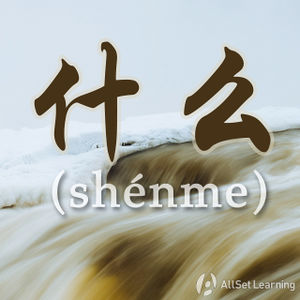Difference between revisions of "Placement of question words"
| Line 100: | Line 100: | ||
*[[Word order]] | *[[Word order]] | ||
*[[Affirmative-negative questions]] | *[[Affirmative-negative questions]] | ||
| − | *[[Yes - no questions with ma]] | + | *[[Yes-no questions with "ma"]] |
== Sources and further reading == | == Sources and further reading == | ||
Revision as of 08:13, 29 July 2013
-
Level
-
Similar to
-
Used for
-
Keywords
How does one ask questions in Chinese? This article will tell you how questions are formed and where the questions words are supposed to go. After all, one of the best ways to learn is to ask questions!
Structure
Question words are one way to form questions in Chinese. In English, question words are also known as wh-words, as the majority of them begin with wh:
| English | Chinese | Pinyin |
|---|---|---|
| who | 谁 | shéi |
| what | 什么 | shénme |
| where | 哪里 | nǎli |
| when | 什么时候 | shénme shíhou |
| why | 为什么 | wèishénme |
| how | 怎么 | zěnme |
In English, question words have to be placed at the beginning of the sentence. This involves changing the word order to allow this rearrangement. In Chinese, using question words is a lot simpler. You simply place a question word in the place of the thing you want to ask about. Nothing needs to be rearranged.
So if the statement is
- 我 是 小李。I am Xiao Li.
the question form - "who are you?" - has the same word order:
- 你 是 谁?Who are you? (you are who?)
This works for whatever it is you want to ask about. The question form has the same word order as the statement form.
Examples
An example for asking and telling what:
- 这 是 什么?What is this?
- 这 是 书。This is a book。
An example for asking and telling where:
- 你 在 哪儿?Where are you?
- 我 在 北京。I'm in Beijing.
An example for asking and telling when:
- 你 什么时候 来的?When are you coming?
- 我 昨天 来的。I'm coming tomorrow.
An example for asking and telling why:
- 你 为什么 学 中文?Why do you study Chinese?
- 因为 我 在 中国。 Because I'm in China.
An example for asking and telling how:
- 你 怎么 学习 中文?How do you study Chinese?
- 我 有 中文 老师 。I have a Chinese teacher.
See also
Sources and further reading
Books
- Basic Patterns of Chinese Grammar (pp. 23) →buy
- Chinese: An Essential Grammar, Second Edition (pp. 132-5) →buy
- New Practical Chinese Reader 1 (新实用汉语课本1) (pp. 57) →buy
- New Practical Chinese Reader 1 (新实用汉语课本1)(2nd ed) (pp. 66, 251) →buy



